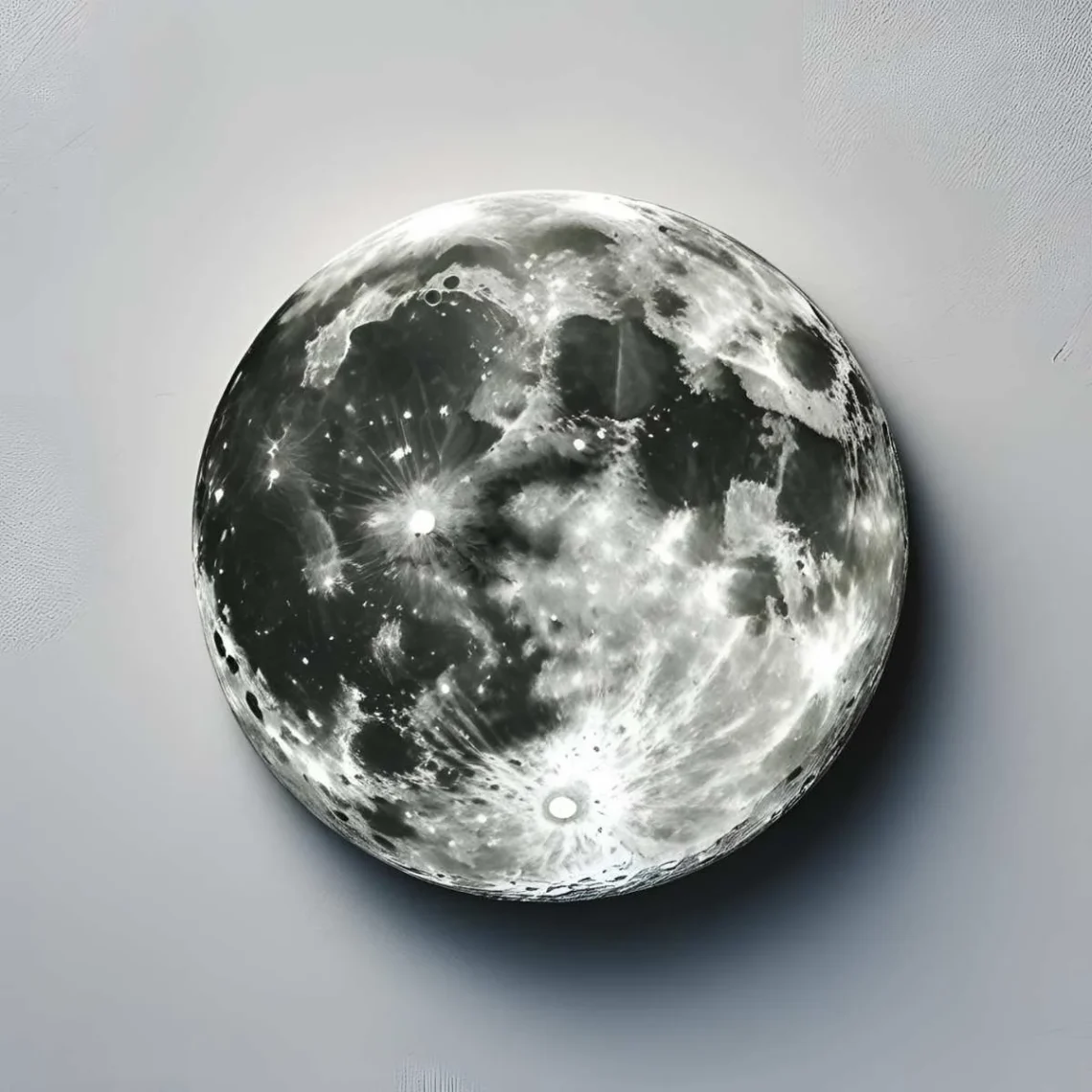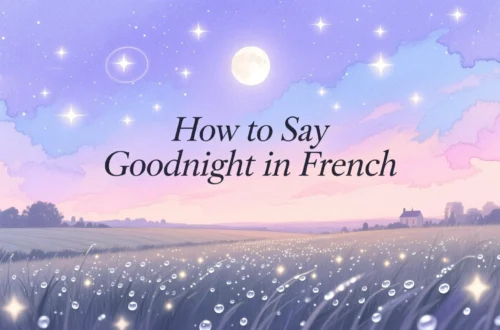Gazing at the moon on a quiet night, I recall my grandmother’s stories of “luna,” the Spanish word for the moon, casting a silvery glow over her childhood village. Across the world, the moon inspires awe, its name carrying cultural weight in every language.
Whether it’s whispered in a Tokyo garden as “tsuki” or celebrated in a Nigerian tale as “osupa,” the word for “moon” reflects humanity’s shared fascination with the night sky, shaped by unique traditions.
Let’s embark on a global journey to explore how people name the moon and what these words reveal about their cultures.
Reference Table: “The Moon” in Different Languages
| Language | Word/Phrase | Cultural/Linguistic Insight |
|---|---|---|
| French | Lune | Evokes romance, linked to poetic imagery in France. |
| Spanish | Luna | Tied to myths of love and mystery in Hispanic cultures. |
| Italian | Luna | Shares Latin roots, symbolizing beauty and dreams. |
| German | Mond | A simple, evocative term, tied to folklore. |
| Mandarin | Yuè (月) | Symbolizes harmony and cycles in Chinese culture. |
| Hindi | Chand | Associated with romance and poetry in India. |
| Japanese | Tsuki (月) | Means “month” too, reflecting lunar calendars. |
| Korean | Dal (달) | Tied to folklore and lunar festivals like Chuseok. |
| Arabic | Qamar (قمر) | Means “radiant,” used poetically across 20+ countries. |
| Swahili | Mwezi | Also means “month,” tied to lunar cycles in East Africa. |
| Zulu | Inyanga | Means “moon” and “healer,” reflecting spiritual ties. |
| Yoruba | Osupa | Linked to deities and storytelling in Nigeria. |
| Maori | Marama | Personified as a deity, central to creation myths. |
| Hawaiian | Mahina | Represents a goddess, tied to navigation and aloha. |
| Cherokee | Nvda | Symbolizes guidance and balance in Native traditions. |
European Languages: The Moon’s Romantic Glow
European languages name the moon with terms steeped in romance and folklore. For instance, in French, “lune” evokes poetic imagery, often linked to love songs under Parisian skies. Meanwhile, Spanish uses “luna,” a word tied to myths of passion and mystery, resonating in Latin American tales. Similarly, Italian also says “luna,” drawing from Latin roots to symbolize dreams and beauty, as seen in Italy’s art and literature. In German, “Mond” is straightforward yet evocative, tied to Germanic folklore where the moon guides lost souls. Thus, these terms reflect Europe’s blend of romanticism and mysticism, casting the moon as both a muse and a beacon.
Asian Languages: The Moon as a Symbol of Harmony
Asia’s diverse languages name the moon with reverence, often tied to cycles and harmony. For example, in Mandarin, “yuè” (moon) symbolizes balance and renewal, central to festivals like Mid-Autumn. In Hindi, “chand” evokes romance, inspiring Bollywood songs and poetry across India. Additionally, Japanese uses “tsuki,” which also means “month,” reflecting lunar calendars and quiet contemplation in Zen gardens. In Korean, “dal” is tied to folklore and festivals like Chuseok, where families honor the moon’s harvest glow. Finally, Arabic’s “qamar” (radiant), used in over 20 countries like Egypt and Syria, carries poetic weight, often praised in love poetry. These terms highlight Asia’s view of the moon as a symbol of unity and inspiration.
African Languages: The Moon in Stories and Spirits
In African languages, the moon’s name often connects to spirituality and community. For instance, Swahili, spoken in over 20 countries like Tanzania and Kenya, uses “mwezi,” meaning both “moon” and “month,” reflecting lunar cycles in daily life. In Zulu, “inyanga” doubles as “moon” and “healer,” tying it to spiritual practices in South Africa. Similarly, Yoruba’s “osupa” in Nigeria links to deities like Yemoja, often celebrated in moonlight rituals. These terms, used in vibrant storytelling or communal gatherings, emphasize the moon’s role as a guide and sacred presence across African cultures.
Indigenous & Island Languages: The Moon as a Divine Guide
Indigenous and island languages name the moon with spiritual and communal significance. For example, Maori in New Zealand uses “marama,” personifying the moon as a deity in creation myths. In Hawaiian, “mahina” represents a goddess, guiding navigators across the Pacific with aloha’s warmth. Similarly, Cherokee’s “nvda” symbolizes balance and guidance, used in Native American ceremonies under starlit skies. In Samoan, “masina” reflects the Pacific’s reverence for the moon as a navigational and cultural beacon. Across these cultures, from New Zealand to the Cherokee Nation, the moon’s name carries divine weight, uniting communities in shared reverence.
Cultural Insights: The Moon’s Timeless Legacy
Names for the moon have evolved with cultural beliefs. In ancient Rome, “luna” inspired the goddess Luna, shaping modern Romance languages. In Arabic, “qamar” appears in medieval poetry, symbolizing beauty and radiance. Moreover, in African traditions, terms like “osupa” tie to oral histories where the moon guides ancestors. In Asia, “yuè” and “tsuki” reflect lunar calendars, influencing festivals and philosophy for centuries. These names are more than words—they carry myths, navigation, and spiritual traditions, connecting humanity to the cosmos across civilizations.
Proverbs and Sayings: Wisdom of the Moon
- French: “La lune éclaire les rêves.” (The moon lights dreams.) – Ties the moon to inspiration.
- Hindi: “Chand jaisa dil, sabko pyar deta hai.” (A heart like the moon gives love to all.) – Links the moon to generosity.
- Swahili: “Mwezi ni mwanga wa usiku.” (The moon is the light of the night.) – Emphasizes guidance.
- Japanese: “Tsuki wa kokoro no kagami.” (The moon is the mirror of the heart.) – Reflects emotional depth.
- Yoruba: “Osupa mu ayọ wa.” (The moon brings joy.) – Connects the moon to happiness.
FAQs
Why do some moon names sound similar?
Shared linguistic roots, like Latin “luna” in Romance languages, and cultural exchanges, like Arabic’s influence on Swahili, create similarities.
What’s the oldest term for “moon”?
Latin “luna” (circa 1st century BCE) is among the earliest, influencing many modern languages.
How do cultures shape the moon’s name?
Spiritual cultures (e.g., African, Indigenous) tie the moon to deities, while others (e.g., Asian) emphasize cycles and harmony.
Conclusion
From “luna” in Spain to “mwezi” in Tanzania, the word for “moon” weaves a celestial thread through human culture. Each term, whether the poetic “chand” in Hindi or the divine “marama” in Maori, reflects unique values while celebrating our shared awe of the night sky. Consequently, these words remind us that the moon unites all people under its glow, inspiring stories and dreams. How do you say “moon” in your language, and what stories does it spark? Share your thoughts below—we’re eager to hear your lunar tales!





